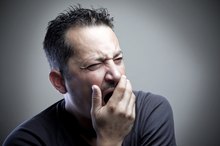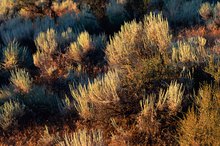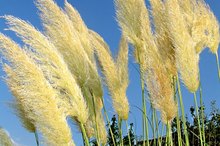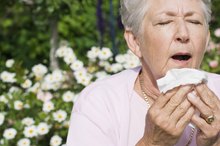What does fact checked mean?
At Healthfully, we strive to deliver objective content that is accurate and up-to-date. Our team periodically reviews articles in order to ensure content quality. The sources cited below consist of evidence from peer-reviewed journals, prominent medical organizations, academic associations, and government data.
- National Institute of Environmental Health Sciences; Pollen; April 2011
- American Academy of Family Physicians; Allergies: Things You Can Do to Control Your Symptoms; September 2010
- Food and Drug Administration; Itching for Relief?; August 2011
The information contained on this site is for informational purposes only, and should not be used as a substitute for the advice of a professional health care provider. Please check with the appropriate physician regarding health questions and concerns. Although we strive to deliver accurate and up-to-date information, no guarantee to that effect is made.
Palm Tree Allergy
Palm tree allergy is caused by seasonal pollen exhibited from these tropical trees. According to the National Institute of Environmental Health Sciences, palm trees can bloom between the months of January and June, depending on what climate you reside in. Palm allergies are common, due to the prevalence of the trees in various areas of the United States 1. Once this type of allergy has been identified, you can take measures to help prevent symptoms when pollen levels are high. More severe cases require diagnosis and treatment from an allergist.
If you are experiencing serious medical symptoms, seek emergency treatment immediately.
Causes
Allergies come in different forms, so not everyone who has a pollen allergy is allergic to tree pollen. A palm tree allergy is indicative of your body’s reduced immunity to pollen, which can sometimes be genetic. When your body comes into contact with tree pollen, it releases histamine, the aggravator of common allergy symptoms. There are certain types of palm trees that don’t exhibit pollen, such as Phoenix palms, so it is always important to identify the differences before planting any new trees in your yard.
- Allergies come in different forms, so not everyone who has a pollen allergy is allergic to tree pollen.
- A palm tree allergy is indicative of your body’s reduced immunity to pollen, which can sometimes be genetic.
Symptoms
Common Allergies in August & September
Learn More
Pollen travels through the air that you breathe when it is in season. Unfortunately, the particles can get lodged in your nose, ears, throat and eyes, causing allergy symptoms. Common ailments include itchy eyes, stuffy nose, headache and sore throat. Severe symptoms can be related to allergic asthma, and can include wheezing and general breathing difficulties.
- Pollen travels through the air that you breathe when it is in season.
- Unfortunately, the particles can get lodged in your nose, ears, throat and eyes, causing allergy symptoms.
Pollen Prevention
Palm tree allergies are best avoided by preventing your exposure to them. However, this task can be challenging if you live in a community where palm trees are present, even if they don’t reside in your own yard. This is due to the fact that pollen travels easily through the wind. To minimize exposure, the National Institute of Environmental Health Sciences recommends avoiding outdoor activities between 5 a.m. and 10 a.m., because pollen levels are generally at their peak during those hours. You can also help keep pollen from entering your home by running the air conditioning and by showering upon entering.
- Palm tree allergies are best avoided by preventing your exposure to them.
- You can also help keep pollen from entering your home by running the air conditioning and by showering upon entering.
Treatment Options
Pollen Allergy and a Cough
Learn More
Preventive measures may not be enough if your pollen allergies are severe. Antihistamine medications help prevent allergy symptoms before they start. Depending on your diagnosis, your doctor might suggest that you take these medications daily. Decongestants are helpful in alleviating stuffy nose, while eye drops and nasal sprays can reduce irritation. In some cases, allergy medications may not be enough, especially if your symptoms disrupt your everyday living. Allergy shots, or immunotherapy, are often recommended for such patients. The U.S. Food and Drug Administration cites that approximately 80 percent of all allergy shot symptoms experience a reduced dependency for medications within one year of immunotherapy.
- Preventive measures may not be enough if your pollen allergies are severe.
- Decongestants are helpful in alleviating stuffy nose, while eye drops and nasal sprays can reduce irritation.
Related Articles
References
- American Academy of Family Physicians; Allergies: Things You Can Do to Control Your Symptoms; September 2010
- Asthma and Allergy Foundation of America. Pollen Allergies.
- Dellavalle CT, Triche EW, Leaderer BP, Bell ML. Effects of ambient pollen concentrations on frequency and severity of asthma symptoms among asthmatic children. Epidemiology. 2012;23(1):55-63. doi:10.1097/EDE.0b013e31823b66b8
- Handa S, De D, Mahajan R. Airborne contact dermatitis - current perspectives in etiopathogenesis and management. Indian J Dermatol. 2011;56(6):700-6. doi:10.4103/0019-5154.91832
- Texas MedClinic. Symptoms and Remedies for Cedar Fever.
- Portelli MA, Hodge E, Sayers I. Genetic risk factors for the development of allergic disease identified by genome-wide association. Clin Exp Allergy. 2015;45(1):21-31. doi:10.1111/cea.12327
- The American Academy of Allergy, Asthma & Immunology. SLIT Treatment for Allergic Rhinitis Nothing to Sneeze About.
- Oral allergy syndrome (OAS). The American Academy of Allergy, Asthma & Immunology.
- Gao Z, Huang M, Qu Z, Wang J, Cai X.Identification of DNA methylation module in seasonal allergic rhinitis.Int J Pediatr Otorhinolaryngol. 2019 Feb;117:163-166. doi: 10.1016/j.ijporl.2018.11.030. Epub 2018 Nov 29.
- Maya-Manzano JM, Sadyś M, Tormo-Molina R, Fernández-Rodríguez S, Oteros J, Silva-Palacios I, Gonzalo-Garijo A.Relationships between airborne pollen grains, wind direction and land cover using GIS and circular statistics.Sci Total Environ. 2017 Apr 15;584-585:603-613. doi: 10.1016/j.scitotenv.2017.01.085. Epub 2017 Jan 27.
Writer Bio
Kristeen Cherney began writing healthy lifestyle and education articles in 2008. Since then, her work has appeared in various online publications, including Healthline.com, Ideallhealth.com and FindCollegeInfo.com. Cherney holds a Bachelor of Arts in communication from Florida Gulf Coast University and is currently pursuing a Master of Arts in English.









